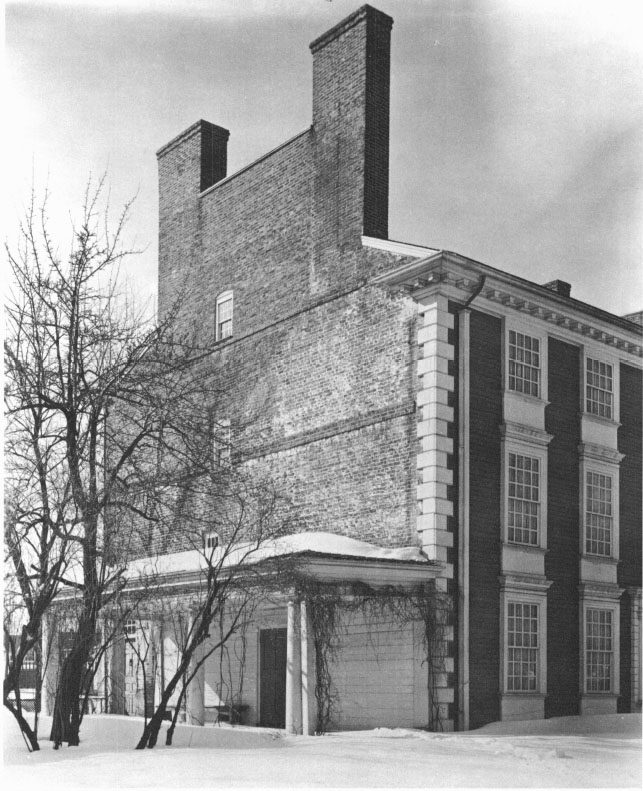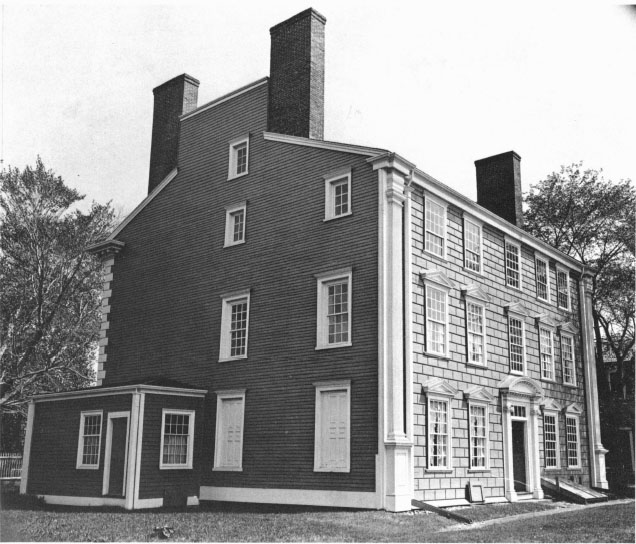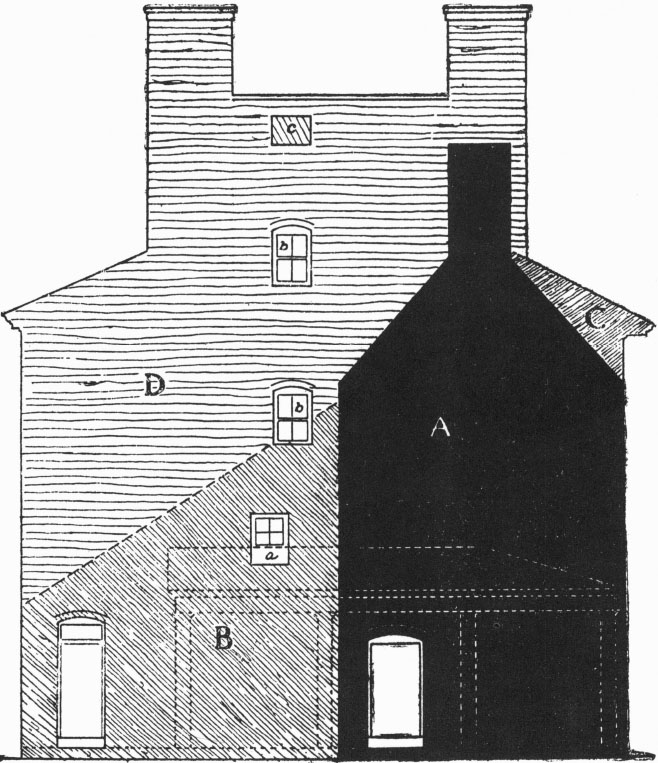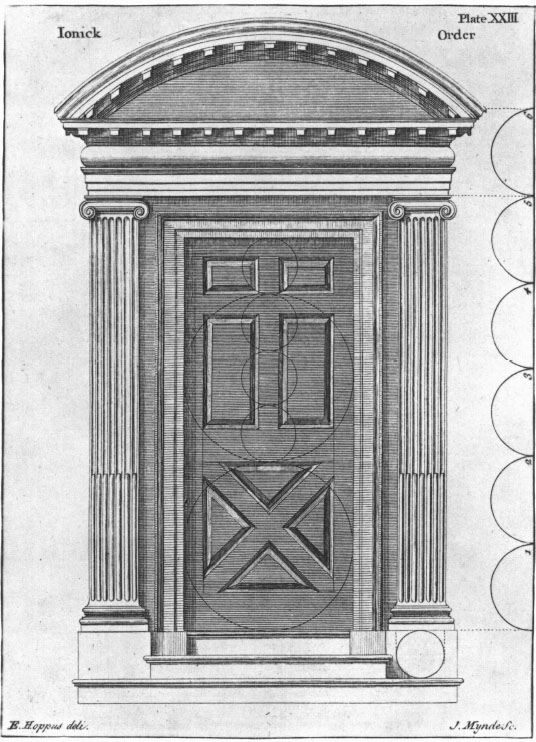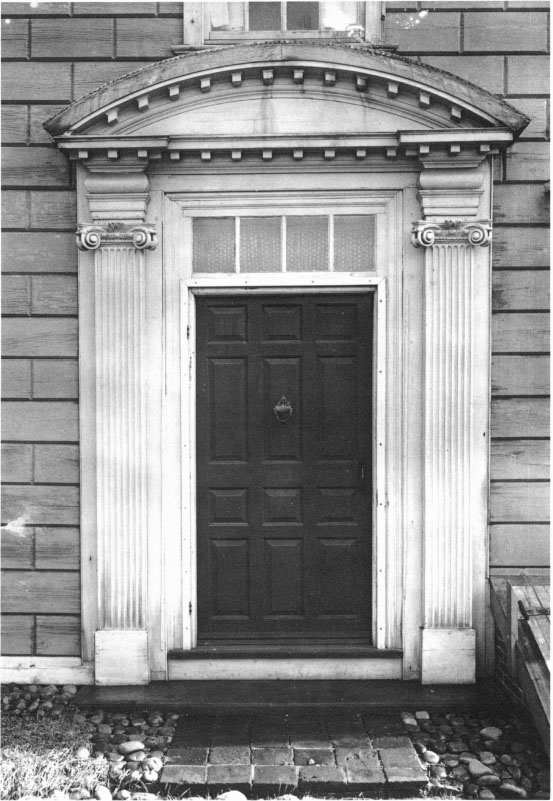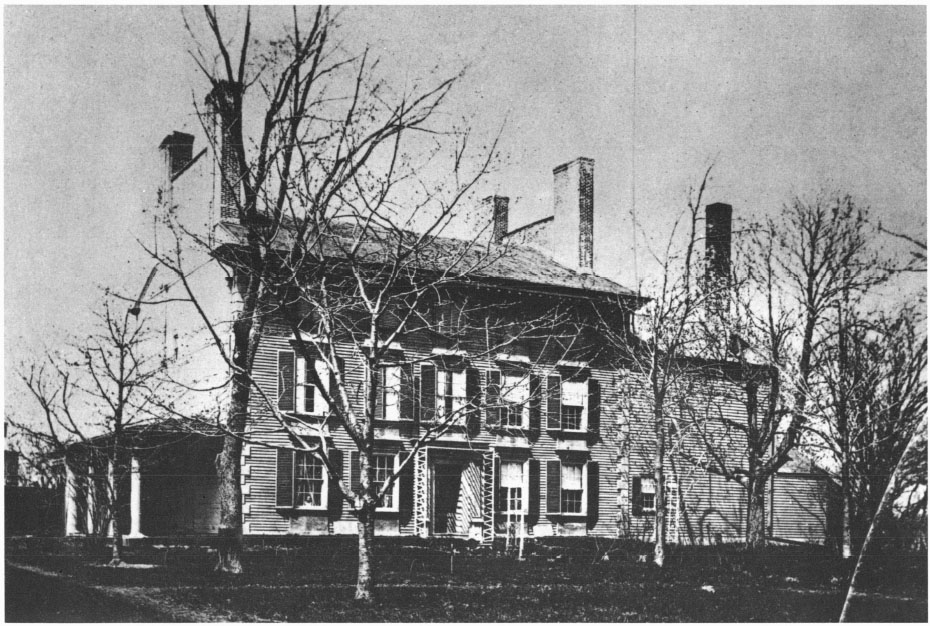The Royall House in Medford: A Re-Evaluation of the Structural and Documentary Evidence
IT has long been thought that the Royall House in Medford was enlarged to its present size approximately ten years after the death of Isaac Royall, Sr., in 1739 by his son, Isaac Royall, Jr.22 Isaac Royall, Sr., had moved from Maine to Antigua in the West Indies in the first quarter of the eighteenth century. He made a fortune in sugar, rum, and in the slave trade, and produced both a son Isaac, Jr., and a daughter Penelope (who became Mrs. Henry Vassall of Cambridge). Owing not only to a succession of poor crops, but chiefly because he wished his children to be educated in a different climate, he bought Ten Hills Farm in 1732, the 600-acre property which had once belonged to Gov. John Winthrop in what was then Charlestown. On the estate was a two-and-one-half-story brick farmhouse, erected either by Mrs. Peter Lidgett who acquired the property in 1677, or by Lt.-Gov. John Usher who succeeded to the title in the 1690’s.
According to tradition, Isaac Royall engaged his brother, a merchant of Boston, to supervise the construction of his mansion. The farmhouse was used as the nucleus, and the brick end wall on the south side of the present mansion shows clearly its original outlines (Fig. 3). The rest of the bricks used were made of the fine clay from the banks of the river, which was used until recently in extensive brickworks in Medford.
Royall was constrained by the ceiling heights of the farmhouse, and by the narrowness of the hallway, which, according to the elegance of the carved detail and the elaborate staircase, would otherwise have inspired more spaciousness. But in his extension of the structure beyond the thick rear wall of the farmhouse, he heightened the West Parlor ceiling in a manner better suited to the sophisticated architectural detail, thus requiring a step up into the “Marble Chamber” above it. The designation “Marble Chamber,” found in the 1739 inventory of the house, refers unquestionably to the painted marbleizing of the woodwork, in addition to which fragments of a hand-painted leather covering were found on the walls above the dado. The carving in this room is the work of a highly skilled craftsman.
The exterior facades are remarkable examples of the Georgian style, doubtlessly inspired by the imported English architectural books of the day. The east front is clapboarded and the windows heavily framed with handsome moldings. The series of windows on each side of the three floors were given a columnar effect, tied together by broad flat panels, unique, I believe, in Colonial New England architecture, but known to have precedents in English Georgian architecture.
The west facade, facing what was originally a cobbled courtyard with an elaborate garden beyond it, is a superb example of rustication, flanked by broad fluted pilasters, surmounting tall paneled plinths. The first- and second-floor windows are pedimented, and the wide door is surmounted by an arched pediment (Fig. 4). The whole effect is Palladian. As the date of the building of the west facade had been subject to question—some having claimed that it was actually an enlargement by Isaac Royall, Jr., of a pre-existing leanto attached to the original brick farmhouse (Fig. 5)23—it was decided, at the advice and under the actual supervision of Abbott Lowell Cummings, to settle the question through an examination of the underlying construction. At a point of junction with the level of the presumptive leanto, a beveled block of the rustication was carefully removed disclosing that the entire three-story wall of the west facade as it now stands is of one build. The construction is, in fact, somewhat unusual, if not ingenious. Massive studs infilled with brick and clay in a continuing seventeenth-century tradition form the underlying structure of the wall, to which wide horizontal sheathing boards have been nailed. Overlying the sheathing at regular intervals are narrow vertical furring strips to which, in turn, the two-inch-thick rustication has been affixed. In this way the builders have provided (and apparently with conscious deliberation) for circulation of air which may well be the reason why the rustication is now, some two hundred and thirty years later, in such uniformly sound condition. The chief grounds for supposing that the wall of the west facade had been raised was a statement in 1900 by the local historian, John H. Hooper. On either side of the west entrance, he reported, there were cracks caused by the shrinkage of finish around the door which revealed “underneath the panel work that now forms the outside of the present building . . . the ends of clapboards that once formed the outside” of the presumptive leanto wall.24 There is no such evidence now, and no trace of clapboards or an earlier wall were found when the wall was opened. One must assume that Mr. Hooper was incorrect in his interpretation of whatever it was he observed through the “cracks” around the entrance.
When, then, was the west facade completed, and is it contemporary with the east or street facade? The answer is to be found in the documents. The house required four or five years to remodel, and in 1737 the Royalls came to live in it. They brought with them from Antigua at least thirteen slaves, who according to tradition lived in the brick “Out Kitchen” built at the same time as the mansion, although the 1739 inventory indicates that some of the slaves slept in the main house. In 1739 Isaac Royall, Sr., died only two years after moving into the house. As was customary at the time, a most complete inventory was made and filed, and it is on the basis of this inventory which describes all major rooms in the house as it now stands that we can safely hypothesize, in conjunction with the structural evidence, the completion before 1739 of both facades. The west entrance, incidentally, is almost certainly modeled on plate xxiii of William Salmon’s Palladio Londinensis, which had just been published in London in 1734 (Figs. 6–7). The inventory is thorough and of such importance that it has seemed wise to include a complete transcription of the document as an appendix to this paper.
Isaac Royall, Jr., lived on in the house after his father’s death, becoming an important and well-liked citizen of Medford. Each Sunday he drove in his coach-and-four to King’s Chapel in Boston. It was on a spring Sunday in 1775 that General Gage confronted him with the refusal to allow him, as a Loyalist, to return to his Medford property which was within the rebel lines. Consequently he went to Salem, then to Halifax, and eventually to England. Although he was most anxious to return to his home in Medford, he was never able to do so. His affection for New England was shown by the provision in his will which led to the creation of the Royall Professorship of Law at Harvard.
On Royall’s departure, the estate was confiscated by the General Court. The house was used during the early months of the Revolution as headquarters for Generals Stark, Lee, and Sullivan, and was visited by General Washington for consultations with them. After the Revolution, General Washington’s secretary, Colonel Cary, bought the property and lived in it for two years. The house then passed through several hands, and in 1811 was bought by Mrs. Jacob Tidd, the sister of William Dawes who had, like Paul Revere, ridden to give warning in Middlesex County of the approach of British troops on the night of April 18, 1775. Mrs. Tidd’s family was so large that it was necessary to extend the house toward the north. As old photographs show, this was a large addition, built without the slightest concern for architectural integrity (Fig. 8); it was later destroyed by a fire that stopped short of damaging the eighteenth-century house.
In the late nineteenth century the house fell into sad disrepair, but was purchased by Miss Kate Gear, from whom it was bought in 1908 by the Sarah Bradlee Fulton Chapter, Daughters of the American Revolution. The Royall House Association was then established, and has maintained it ever since. A 1912 article in The Medford Mercury concerning the restoration that was then under way noted that many fireplaces had been bricked up to accommodate stoves. Marble mantels had been installed; on removing these and the bricks, original Delft tiles were discovered (though those in the West Parlor were introduced at the time of restoration). Through volunteer work, the Association has furthered the work of restoration and preservation of the Royall House, and has acquired very choice furnishings of the period in order to bring the rooms back as closely as possible to their eighteenth-century appearance.
The formal garden beyond the courtyard was noted for its beauty. A long allée led due west. The focal point was an octagonal gazebo, mounted on two circular terraced levels, under which ice was stored. The structure consisted of seven arched windows and an arched door, all flanked by fluted pilasters with Ionic capitals; the roof was a graceful bell-shaped dome, surmounted with a cupola. Above was a carved wooden life-sized figure of Mercury which the Association now displays nearly intact. It stood on one foot, and may conceivably have been mounted to turn as a weather vane. A photograph and two watercolors of the complete gazebo made before its demolition indicate that it must have been an outstanding garden structure. One wall of the gazebo has been preserved by the Sarah Bradlee Fulton Chapter, D.A.R., and stands in the present garden as a memorial to General Washington.

 ARTHUR L. FINNEY
ARTHUR L. FINNEY 
